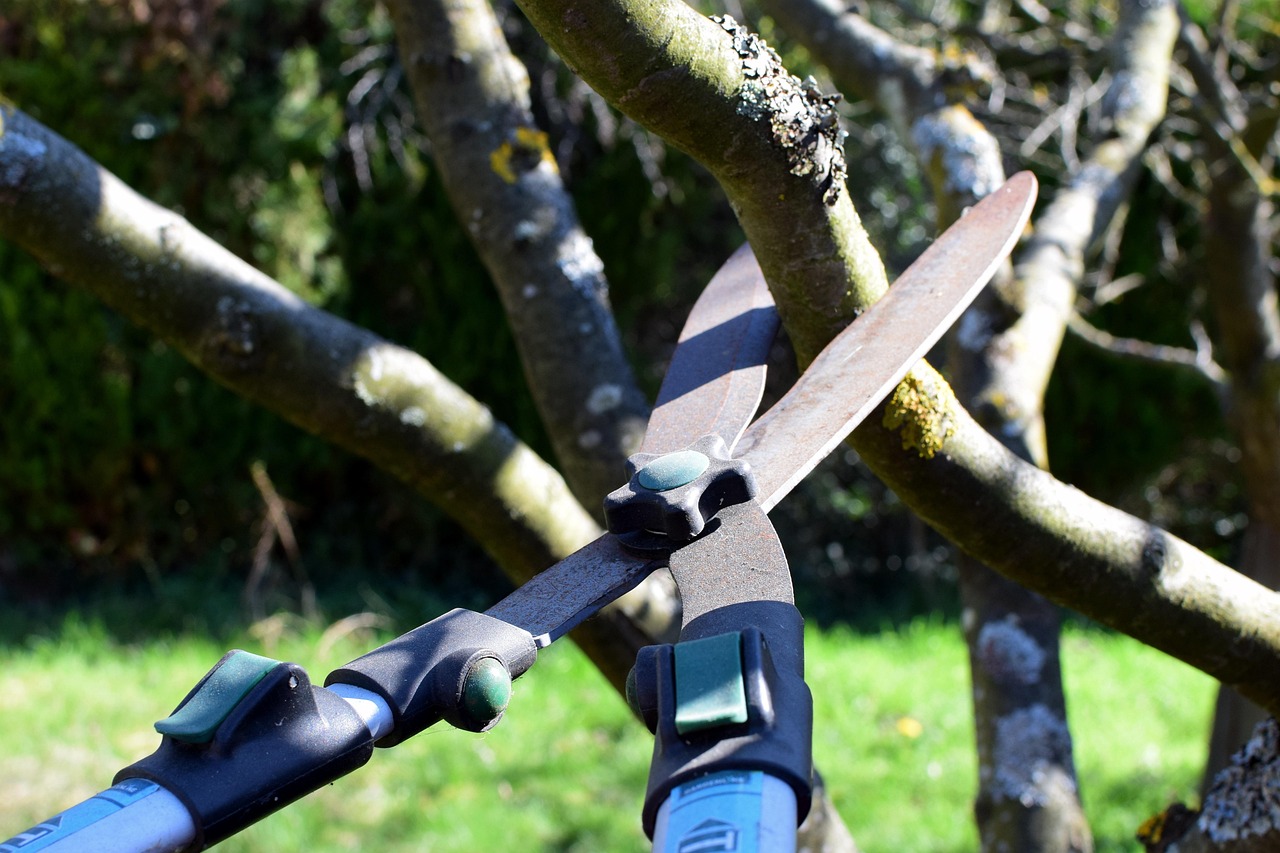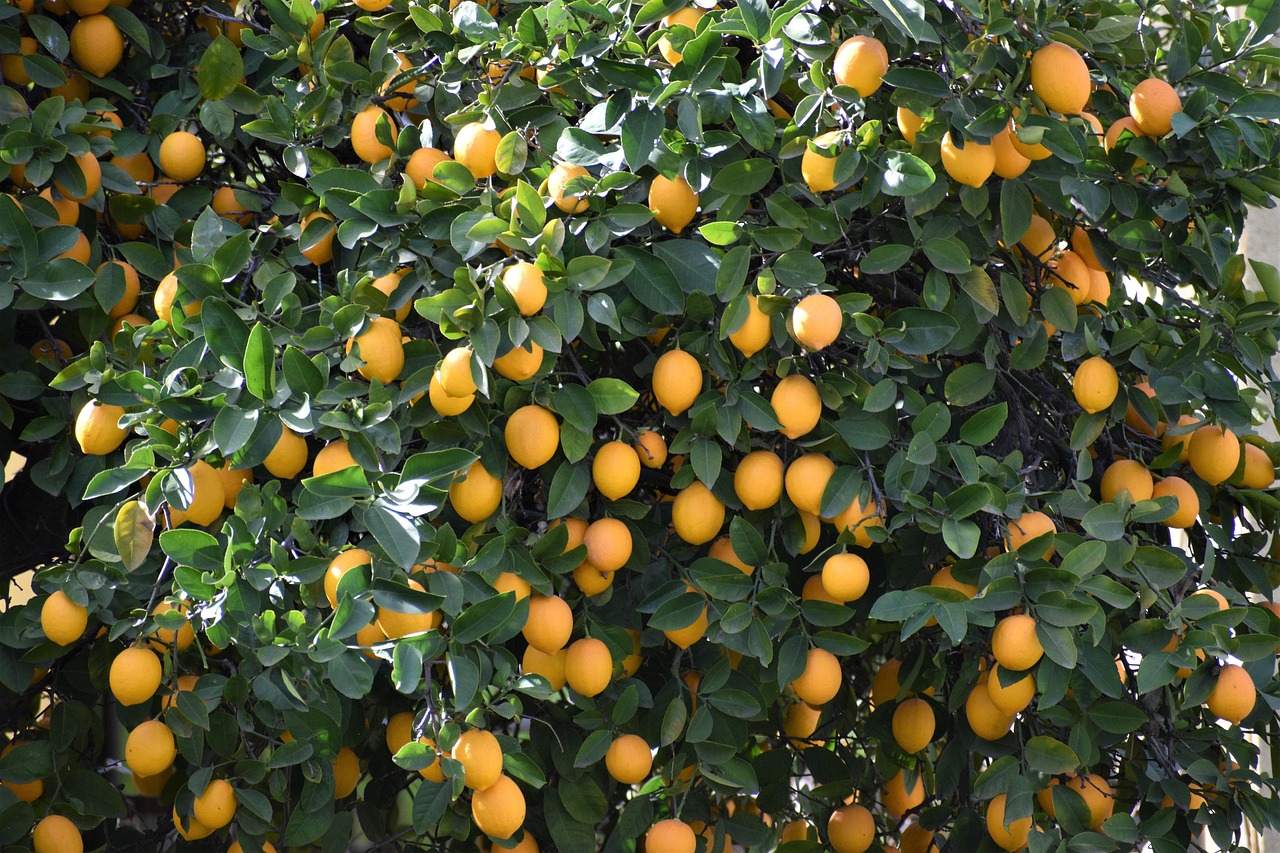Lemon tree pruning is essential for water conservation as it improves airflow and light penetration. Properly pruned trees require less water, as their reduced foliage minimizes evaporation and enhances the efficiency of water usage during irrigation.
Lemon trees are a popular choice for home gardens due to their fragrant flowers and delicious fruit. However, maintaining these trees requires specific techniques, especially when it comes to pruning. Pruning not only shapes the tree but also plays a vital role in its health and the efficient use of water. By understanding how to prune lemon trees correctly, gardeners can promote better growth while conserving water.

Water conservation is becoming increasingly important in today’s climate. The demand for water is rising due to population growth and changing weather patterns. Gardening practices that conserve water are essential for sustainable living. Lemon trees, like many other plants, can thrive with careful management and pruning techniques that reduce water needs.
Benefits of Pruning Lemon Trees
Pruning lemon trees offers various benefits that directly contribute to water conservation. Here are some key advantages:
- Improved Air Circulation: Thinning out dense branches allows air to circulate more freely. This helps reduce humidity around the leaves, lowering the risk of fungal diseases.
- Enhanced Light Penetration: Pruning opens up the canopy, ensuring that sunlight reaches all parts of the tree. This promotes healthier leaf growth and better fruit production.
- Reduced Water Loss: A well-pruned tree has less foliage, which means less surface area for water evaporation. This makes the tree more efficient in its water use.
- Increased Fruit Quality: With better airflow and light, the quality of lemons improves. Healthier trees produce more robust fruit that requires less water to grow.
Understanding the biology of lemon trees can further highlight the importance of proper pruning. Lemon trees have a unique growth pattern and respond positively to maintenance practices that encourage healthy development.

Optimal Pruning Techniques
To effectively prune lemon trees, it is important to follow specific techniques that maximize their health and minimize water usage.
Timing
The best time to prune lemon trees is during late winter or early spring. This timing allows the tree to recover before its growing season begins. Pruning too late in the warm season can stress the tree and lead to excessive water loss.
Tools Required
Using the right tools is crucial for effective pruning. Here are some essential tools:

- Hand Pruners: Ideal for small branches up to ¾ inch in diameter.
- Loppers: Best for larger branches up to 2 inches thick.
- Saw: Needed for very thick branches that require more effort to cut.
- Gloves: Protect hands from thorns and sharp edges.
Pruning Process
The pruning process can be broken down into several steps:
- Assess the Tree: Examine the overall shape and health of the tree before starting.
- Remove Dead or Diseased Wood: Cut away any branches that are dead or show signs of disease. This prevents potential spread and conserves energy.
- Thin Out Crowded Areas: Cut back branches that are too close together to improve airflow and light access.
- Shape the Tree: Aim for an open center structure that allows light and air to circulate effectively.
Watering Practices Post-Pruning
After pruning, it is essential to adjust watering practices. A well-pruned lemon tree will need less water, especially during dry spells. Here are some tips for effective watering:
- Monitor Soil Moisture: Check the soil regularly. Water only when necessary to prevent overwatering.
- Deep Watering Techniques: Water deeply but infrequently to encourage roots to grow deeper into the soil.
- Avoid Watering Leaves: Focus on watering the base of the tree rather than spraying the leaves, which can increase evaporation.
Implementing these techniques not only keeps lemon trees healthy but also supports broader environmental goals by conserving precious water resources. Understanding how to prune effectively can lead to a more sustainable gardening approach while enjoying bountiful lemon harvests.

Common Mistakes in Pruning Lemon Trees
While pruning is essential for the health of lemon trees, many gardeners make common mistakes that can hinder growth and water conservation. Recognizing these pitfalls can help ensure that your pruning efforts are successful.
Over-Pruning
One of the most frequent mistakes is over-pruning. Removing too many branches can stress the tree, leading to reduced fruit production and increased water needs. It is crucial to maintain a balance when pruning.
Improper Timing
Pruning at the wrong time can also have negative effects. For instance, pruning during the fall or early winter can expose the tree to cold temperatures, which may damage new cuts. Late winter or early spring is the optimal time to prune, as mentioned previously.
Lack of Clean Tools
Using dirty or dull tools can introduce diseases to the tree. Always clean and sharpen tools before beginning any pruning session to prevent the spread of pathogens.
Signs Your Lemon Tree Needs Pruning
Knowing when to prune is just as important as how to prune. Here are some signs that indicate it’s time to prune your lemon tree:
- Excessive Crowding: If branches are growing too close together, it’s time to thin them out.
- Dead or Diseased Branches: Look for any branches that appear lifeless or show signs of disease. These should be removed promptly.
- Poor Fruit Production: If your lemon tree has produced fewer fruits than usual, it may need pruning to encourage better growth.
- Weak Growth: If you notice spindly or weak branches, pruning can help redirect energy to healthier growth.
Pruning Techniques for Different Growth Stages
Lemon trees go through various growth stages, and each stage requires different pruning techniques. Understanding these can help maximize water conservation and overall health.
Young Lemon Trees
For young lemon trees, the primary goal is to establish a strong framework. Focus on:
- Shaping: Aim for a central leader with well-spaced lateral branches. This promotes a sturdy structure.
- Removing Suckers: Cut away any suckers that grow from the base of the trunk or roots. These take energy away from the main tree.
- Pinching: Pinch off the tips of young shoots to encourage bushier growth and a more robust tree.
Mature Lemon Trees
Mature lemon trees require different pruning strategies. The focus should be on maintaining health and productivity:
- Crown Thinning: Remove some inner branches to allow light penetration and air circulation.
- Height Control: Keep the tree at a manageable height for easy harvesting and care by cutting back taller branches.
- Cleaning Up: Regularly remove any dead, damaged, or diseased wood to prevent decay and enhance water conservation.
The Role of Fertilization in Water Conservation
Proper fertilization complements pruning efforts by ensuring that lemon trees remain healthy and productive. Healthy trees are more efficient in their water use. Here are some key points about fertilization:
Choosing the Right Fertilizer
Selecting a balanced fertilizer that provides essential nutrients is crucial. Look for fertilizers with a good mix of nitrogen, phosphorus, and potassium. Organic options can also enhance soil health.
Application Timing
Fertilize at the beginning of the growing season, ideally just after pruning. This timing helps support new growth and improves the tree’s ability to utilize water efficiently.
Avoiding Over-Fertilization
Like over-pruning, over-fertilization can lead to excessive foliage growth at the expense of fruit production. Follow package instructions carefully and consider conducting soil tests to determine nutrient needs.
Water Conservation Techniques Beyond Pruning
In addition to pruning, several other techniques can further enhance water conservation for lemon trees:
- Mulching: Apply organic mulch around the base of the tree to retain moisture and regulate soil temperature.
- Drip Irrigation: Install a drip irrigation system to deliver water directly to the roots, minimizing evaporation loss.
- Rainwater Harvesting: Collect rainwater in barrels to use for irrigation, reducing reliance on municipal water supplies.
By implementing these strategies alongside effective pruning, gardeners can create an environment that supports healthy lemon trees while conserving valuable water resources. Each practice contributes to a more sustainable approach to gardening and food production.
Understanding Lemon Tree Growth Patterns
To effectively prune and care for lemon trees, it is vital to understand their growth patterns. Knowledge of how these trees grow will enhance your ability to manage them for optimal water conservation.
Growth Habits of Lemon Trees
Lemon trees typically follow a specific growth pattern that involves both vegetative growth and flowering. Understanding these phases is essential for proper pruning:
- Vegetative Growth: This phase occurs when the tree focuses on growing new leaves and branches. It usually happens in spring and early summer.
- Flowering: Lemon trees produce flowers in late spring. Flowers can appear on new or older wood, making timing crucial for pruning.
- Fruit Development: After pollination, flowers develop into fruit. The tree requires sufficient nutrients and water during this time.
Factors Affecting Growth
Several environmental factors influence the growth of lemon trees:
- Climate: Lemon trees thrive in warm, subtropical climates. Temperature extremes can affect their growth rate and water needs.
- Soil Quality: Well-drained, nutrient-rich soil enhances growth. Poor soil can lead to stunted development and increased water consumption.
- Water Availability: Consistent moisture is crucial during the growing season. However, overwatering can lead to root rot and other issues.
Pruning for Flower and Fruit Production
Effective pruning not only promotes tree health but also optimizes flower and fruit production. Here are some strategies to enhance yield while conserving water:
Encouraging Flowering
To promote flowering in lemon trees, consider the following tips:
- Selective Pruning: Remove older wood to encourage new growth, as new branches are more likely to produce flowers.
- Avoid Heavy Pruning: While some thinning is necessary, excessive pruning can reduce the number of flowers produced.
- Cultivating New Shoots: Encourage the growth of new shoots through light pruning and pinching back tips.
Maximizing Fruit Set
Once flowering occurs, maximizing fruit set becomes the priority. Here are effective techniques:
- Avoid Late Pruning: Pruning too late in the season can remove potential fruit-bearing branches.
- Maintain an Open Canopy: Ensure that sunlight reaches all parts of the tree by thinning out crowded branches.
- Nutrient Management: Proper fertilization after pruning supports fruit development, leading to healthier lemons that require less water.
Pest and Disease Management
Pests and diseases can significantly impact the health of lemon trees, leading to increased water consumption and reduced yields. Effective management strategies are essential for maintaining tree vitality.
Common Pests
Lemon trees are susceptible to several pests that can affect their health:
- Aphids: These small insects feed on sap, weakening the tree. Control them with insecticidal soap or natural predators like ladybugs.
- Citrus Leaf Miners: These pests create tunnels in leaves, causing damage. Remove affected leaves and use neem oil for control.
- Spider Mites: These tiny arachnids thrive in dry conditions. Increase humidity around the tree and apply miticides if necessary.
Disease Prevention
Disease management is equally crucial for maintaining healthy lemon trees:
- Citrus Canker: This bacterial disease causes lesions on leaves and fruit. Remove infected branches and disinfect tools after use.
- Root Rot: Caused by overwatering or poor drainage, root rot can be fatal. Ensure proper soil drainage and avoid waterlogging.
- Powdery Mildew: This fungal disease appears as white spots on leaves. Increase air circulation through strategic pruning to prevent outbreaks.
The Importance of Seasonal Care
Caring for lemon trees throughout the seasons can greatly influence their overall health and water efficiency. Here’s a breakdown of seasonal tasks that enhance tree vitality:
Spring Care
In spring, focus on preparing the tree for active growth:
- Pruning: Conduct any necessary pruning to shape the tree and remove dead branches.
- Fertilizing: Apply balanced fertilizer to support new growth.
- Pest Inspection: Monitor for early signs of pests and diseases.
Summer Care
During summer, maintain moisture levels and manage growth:
- Irrigation Management: Adjust watering practices based on temperature and humidity levels.
- Mulching: Refresh mulch to retain moisture during hot months.
- Pest Control: Continue monitoring for pests that may thrive in warm weather.
Fall Care
In fall, prepare the tree for cooler temperatures:
- Final Pruning: Complete any necessary pruning before winter sets in.
- Irrigation Adjustments: Reduce watering frequency as temperatures drop.
- Disease Prevention: Clean fallen leaves and debris to prevent disease outbreaks during winter.
This seasonal care approach not only enhances the health of lemon trees but also contributes to their efficient use of water throughout the year.
Long-Term Benefits of Pruning for Water Conservation
Understanding the long-term benefits of pruning lemon trees for water conservation can significantly impact gardening practices. As lemon trees mature, the advantages of consistent and proper pruning become more pronounced.
Enhanced Tree Longevity
Regular pruning not only promotes healthy growth but also extends the lifespan of lemon trees. By removing dead or diseased wood, gardeners help prevent infections that can compromise tree health. This proactive approach ensures that trees can thrive for many years, requiring less water as they become established.
Improved Yield Over Time
With effective pruning techniques, lemon trees will produce higher yields of fruit. A well-maintained tree, with adequate airflow and light penetration, is more likely to bear robust and flavorful lemons. This increase in yield means that gardeners can enjoy more fruit with less water input over time.
Soil Health and Nutrient Availability
Pruning encourages healthier soil by fostering root development. Healthy roots improve the tree’s ability to absorb nutrients and moisture, leading to a more efficient use of water. Additionally, as fallen leaves decompose, they enrich the soil with organic material, promoting further water retention.
Integrating Technology in Lemon Tree Care
The integration of modern technology can enhance traditional methods of lemon tree care, particularly concerning water conservation. Here are a few innovative approaches:
Smart Irrigation Systems
Utilizing smart irrigation systems can optimize watering practices. These systems use sensors to monitor soil moisture levels and automatically adjust watering schedules based on real-time data. This technology helps ensure that lemon trees receive just the right amount of water, minimizing waste and promoting healthier growth.
Drones and Imaging Technology
Drones equipped with imaging technology can assess tree health from above. By providing data on leaf density and health, gardeners can make informed decisions about pruning and watering needs. This proactive approach can lead to better water management practices.
Mobile Applications for Gardeners
Mobile applications designed for gardening can assist in tracking watering schedules and monitoring tree health. Many apps offer reminders for pruning and fertilization while providing tips tailored to specific climates and conditions. Such tools empower gardeners to maintain a sustainable approach to lemon tree care.
Community Involvement and Education
Engaging with local gardening communities can foster a shared commitment to sustainable practices. Community involvement provides opportunities for education and resource sharing:
- Workshops: Attend or organize workshops focused on pruning techniques and water conservation strategies.
- Sharing Resources: Engage with fellow gardeners to exchange tools, tips, and experiences related to lemon tree care.
- Participating in Local Initiatives: Join community programs that promote sustainable gardening practices, including water conservation efforts.
This communal approach not only benefits individual gardeners but also contributes to a collective understanding of sustainable horticulture within local ecosystems.
Final Thoughts
Lemon tree pruning for water conservation is a multifaceted practice that combines knowledge, techniques, and environmental awareness. By understanding the growth patterns of lemon trees and implementing effective pruning methods, gardeners can significantly enhance tree health and fruit production while minimizing water usage.
Incorporating seasonal care routines, pest management strategies, and modern technology further supports the goal of sustainable gardening. The long-term benefits of pruning extend beyond individual trees, contributing positively to soil health and community engagement.
Ultimately, the journey of caring for lemon trees is not just about fruit production; it is also about cultivating a more sustainable and environmentally friendly approach to gardening. Through dedicated care, education, and community involvement, gardeners can enjoy the sweet rewards of their efforts while making a meaningful impact on water conservation.
